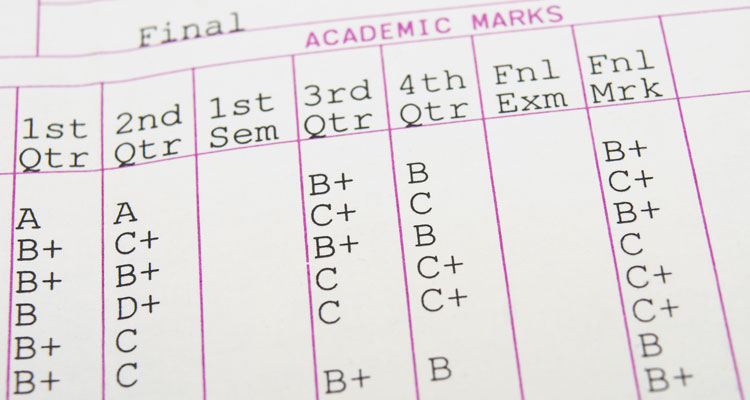Schools’ traditional grading system using letter grades goes back more than 100 years. From their very earliest days, colleges and universities experimented with systems to differentiate students’ academic accomplishments. There are records showing that in 1785, a Yale professor made what may be the first attempt to assign categories when he divided students into four groups: Optimi, Second Optimi, Inferiores, and Pejores.
It wasn’t until 1897 that Mount Holyoke introduced letter grades from A–E. Though the system has been tweaked in the years since, the modern A–F grades closely resemble this early evaluation method. Today, letter grading is nearly universal in U.S. elementary and secondary schools, and it continues to be the most common system used in institutions of higher learning.
The Benefits of Rethinking Letter Grades
Changes in understanding of motivation, learning differences, and engagement—along with the development of flaws in the system as it has evolved—have inspired some administrators, educators, and families to examine alternative evaluation solutions. They make strong arguments for dropping traditional A–F grades in favor of models that focus on the whole learner.
One of the biggest arguments against the letter grading system is that a low grade doesn’t necessarily reflect students’ comprehension of the subject matter. Because end-of-term grades are based on the average score of multiple assignments, an incomplete project or a missed exam can dramatically impact the final grade. Students who have fully mastered the material can still get a failing grade with a single zero.
If the incident occurs early enough in the course, students quickly realize no amount of effort will solve the problem, and they may fully disengage from the class. Alternative grading methods address this problem with a focus on measuring students’ ability to demonstrate mastery of skills, with a separate category or comments section for issues with organization, on-time completion of assignments, and others.
Another argument against the A–F system is lack of precision. While the traditional method of grading shows students’ progress compared to peers, it doesn’t offer insight into specific strengths and weaknesses. Some schools have determined that students, particularly at the elementary school level, are better served with a numerical system that evaluates a range of knowledge, skills, and abilities. This is referred to as a standards-based approach.
In one example, elementary schools in Fairfax County, Virginia, replaced the A–F grading system with a four-level numerical system that measures a wide range of skills. Instead of a single letter grade for “math,” students receive a numerical score for seven sub-categories under this heading, including computation and measuring. Proponents of the change believe students, teachers, and families are better able to focus on resolving skills gaps when this level of detail is available.
The Downside of Changing the Current Grading System
Of course, there are many that prefer to keep the current A–F system in place with some adjustments. Some parents are concerned that exceptional students won’t be recognized for their consistently outstanding work under an alternative grading method. Others find alternative grading methods too complex and confusing. They prefer a familiar grade on a simple report card to understand at-a-glance how their student is progressing. Finally, many express concern that colleges won’t recognize alternative and standards-based evaluation systems, putting students at a disadvantage when they apply.
A Compromise
As researchers continue to gather data suggesting that the letter grades system is obsolete, advocates of alternative grading methods may find success by focusing on effective change management. After all, dismantling a system that has been trusted for more than a century is sure to make many students and families uncomfortable. Collecting and incorporating feedback from all involved into new evaluation systems, as well as providing meaningful opportunities for communication and education, may be effective in gaining the support of teachers, students, and families who are not quite ready to see the A–F system retired.
What do you think of alternative evaluation systems? Should schools keep tried-and-true letter grading in place, or is it time to try something new? Share your thoughts in the comments section.





































